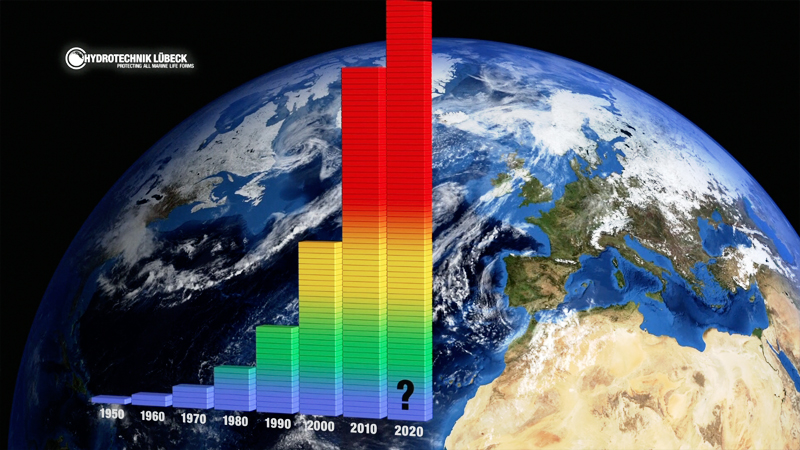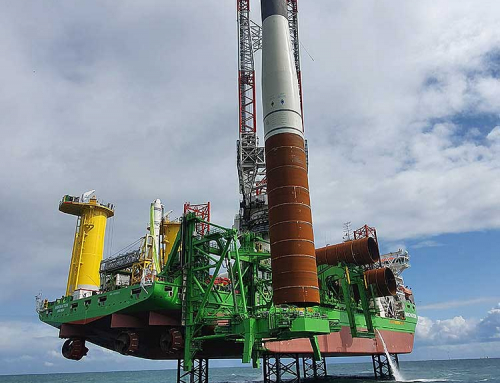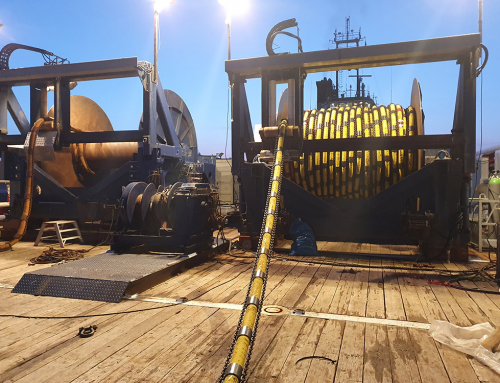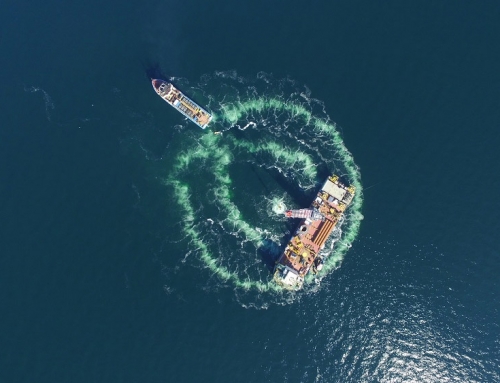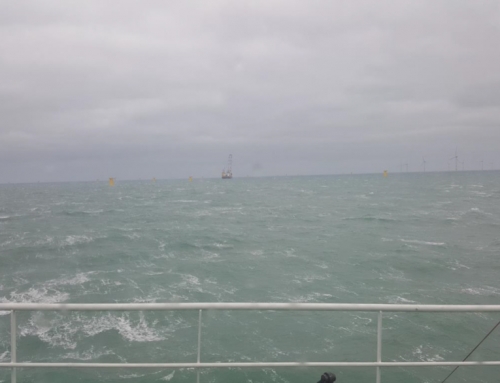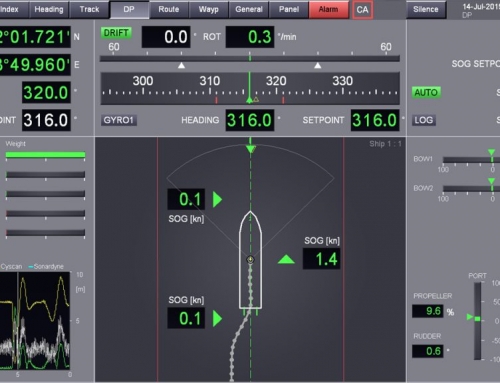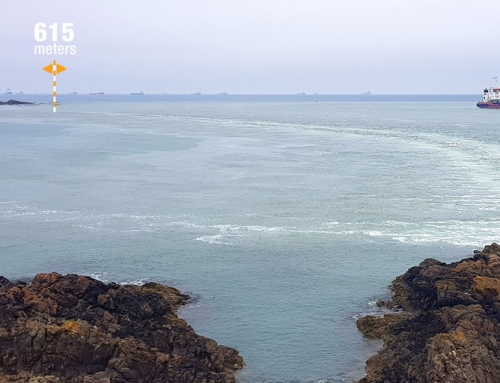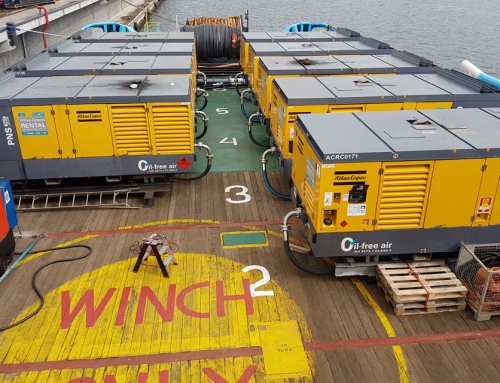Since 1950, doubling of underwater noise every 10 years
The advancing industrial use of the world’s oceans will cause the number of noise and noise pollution sources to continue to rise significantly. Underwater noise is mainly caused by:
We see and hear nothing over water
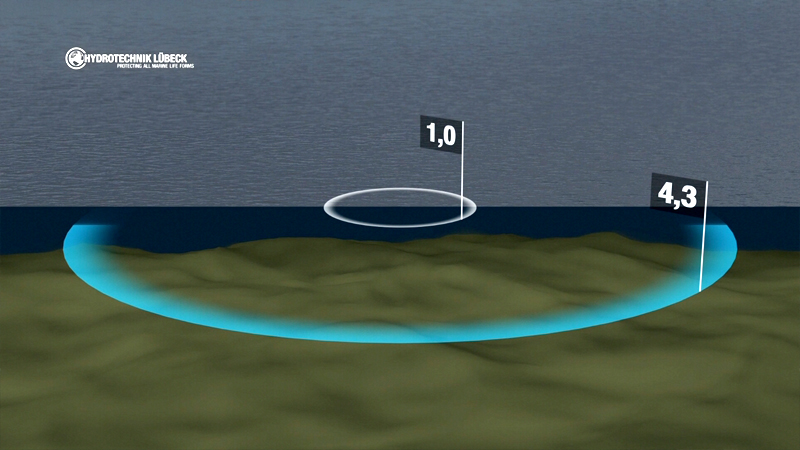 So far, our oceans have been opened up, unimpressed by the possible damage. It is now clear that the ecosystem of our oceans is severely disrupted by underwater noise. Due to the high water density, sound travels 4.3 times faster than in the air, and its range is correspondingly greater. The noise level of some sources of noise in our oceans is measured at the same distance, many times higher than that of a launching rocket. Whales, seals, many fish, and even some species of octopus use sound for vital activities. The natural background noise in the water is essential for your communication, your search for partners and food, avoidance of enemies, and your orientation.
So far, our oceans have been opened up, unimpressed by the possible damage. It is now clear that the ecosystem of our oceans is severely disrupted by underwater noise. Due to the high water density, sound travels 4.3 times faster than in the air, and its range is correspondingly greater. The noise level of some sources of noise in our oceans is measured at the same distance, many times higher than that of a launching rocket. Whales, seals, many fish, and even some species of octopus use sound for vital activities. The natural background noise in the water is essential for your communication, your search for partners and food, avoidance of enemies, and your orientation.
Air is the solution to underwater noise
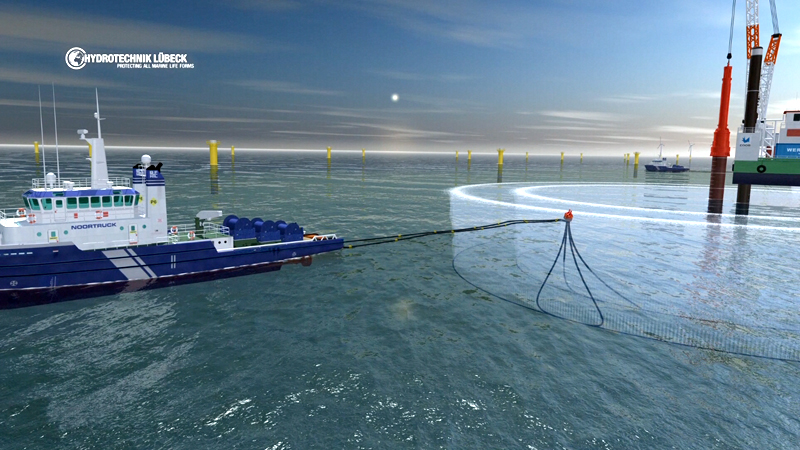 A sensible measure against underwater noise is the use of air bubbles in the water. They change the density of the water. Sound waves are broken. The sound level is lowered by up to 5% through the clever use of technology.
A sensible measure against underwater noise is the use of air bubbles in the water. They change the density of the water. Sound waves are broken. The sound level is lowered by up to 5% through the clever use of technology.
The Big Bubble Barrier was developed for this work. Here, a hose system is laid out by special ships similar to the one used in fishing. Air is pressed into the hoses, which are equipped with special nozzles. The rising air bubbles create the so-called bubble veil. The efficiency depends on the depth of the water, the current, and the waves.
The system has proven to be very successful on almost all offshore wind farm construction sites in the North and Baltic Seas. The Big Bubble Curtain has long been an indispensable part of the detonation of war ammunition on the ocean floor.
As long as it is stationary and underwater, any noise source can be shielded by the compressed air system of the Big Bubble Curtain. Special ships are used in the offshore area, while our compressed air barrier system is used in coastal and harbor areas.


